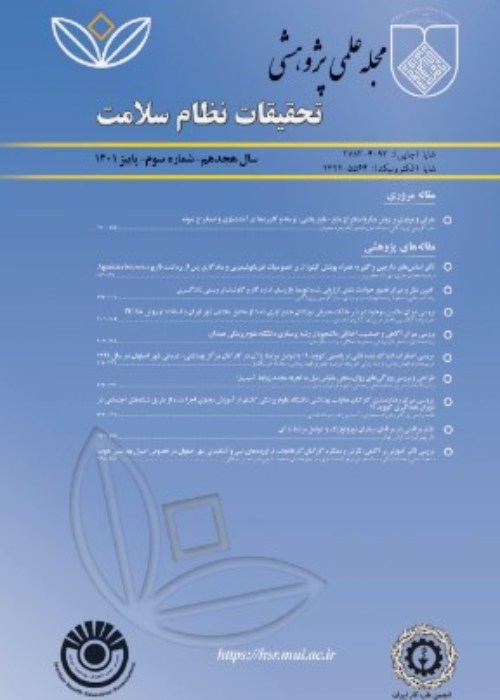The Relation between Nutrition and Serum Lipid and Apolipoprotein Profile of Female Elementary School Students, Khomeinishahr, Iran
Author(s):
Abstract:
Background
The excessive changes in serum of lipids, lipoproteins and apolipproteins can be considered as strong risk factors for cardiovascular diseases.In particularlipoproteins can determine the risk of cardiovascular illnesses in teenyears (before showing clinical symptoms).Studies have shown that the serum level of LDLC-HDLC is a function of the productionamount of APOA1 and APOB100.Moreover, the amount of APOA1has a negative correlation and the amount of APOB100 has a positive correlationwith cardiovascular diseases.This study has done in order to determinethe lipid and apolipoprotein levels of serum in elementary school girls in Khomeini Shahr town and to see which students are exposed to an increment of blood lipids and cardiovascular disease.Methods
One hundred students were chosen randomly and their blood Samples were taken in fasting state. Personal information form and agreement form for taking part in the research and a 24 hour dietary recallfor 3 days(2 working days and one off day) were given to their parents to complete, then they were analyzed by using the transforming coefficient tables and nutrition percentage, and SPSS software. The results were analyzed statistically. The values of absolute cholesterol TG, LDL, HDL were also measured enzymatically and lipoproteins of APOAI andAPOB100were determinedby immunoturbidimetry and compared with reference values and nutritional status.Results
Results showed that there were no significant differencesbetween mean absolute cholesterol,mean APOAI and mean reference.The mean of TG, HDLC, AOPB100weresignificantlyhigher than mean reference. Moreover,mean LDLC was significantly lower than mean reference. There was a significant inverse correlation between protein intake through food and APOB100 amount(r= -0.212, P = 0.034). There was a significant direct correlation between cholesterol intake through food and APOAI amount (r= 0.250 P= 0.012,). In addition, dietary Carbohydrates, Fibers and fat intake had no significant correlation with the studied variables (SFA- PUFA- MUFA- Fat total).Conclusions
There were a meaningful and direct correlation between dietary protein intake and AOPB100 (P = 0.034) and there wasalso a direct correlation between APOAI and dietary cholesterol intake (P = 0.012).Language:
Persian
Published:
Journal of Health System Research, Volume:8 Issue: 1, 2012
Page:
44
https://magiran.com/p999917
دانلود و مطالعه متن این مقاله با یکی از روشهای زیر امکان پذیر است:
اشتراک شخصی
با عضویت و پرداخت آنلاین حق اشتراک یکساله به مبلغ 1,390,000ريال میتوانید 70 عنوان مطلب دانلود کنید!
اشتراک سازمانی
به کتابخانه دانشگاه یا محل کار خود پیشنهاد کنید تا اشتراک سازمانی این پایگاه را برای دسترسی نامحدود همه کاربران به متن مطالب تهیه نمایند!
توجه!
- حق عضویت دریافتی صرف حمایت از نشریات عضو و نگهداری، تکمیل و توسعه مگیران میشود.
- پرداخت حق اشتراک و دانلود مقالات اجازه بازنشر آن در سایر رسانههای چاپی و دیجیتال را به کاربر نمیدهد.
In order to view content subscription is required
Personal subscription
Subscribe magiran.com for 70 € euros via PayPal and download 70 articles during a year.
Organization subscription
Please contact us to subscribe your university or library for unlimited access!


